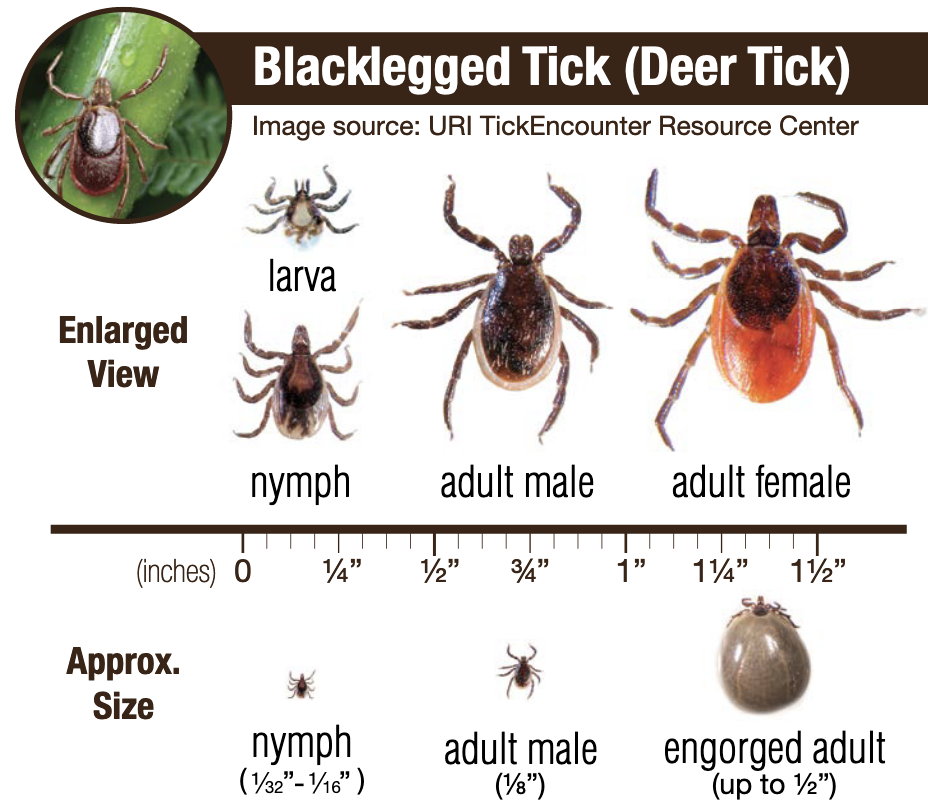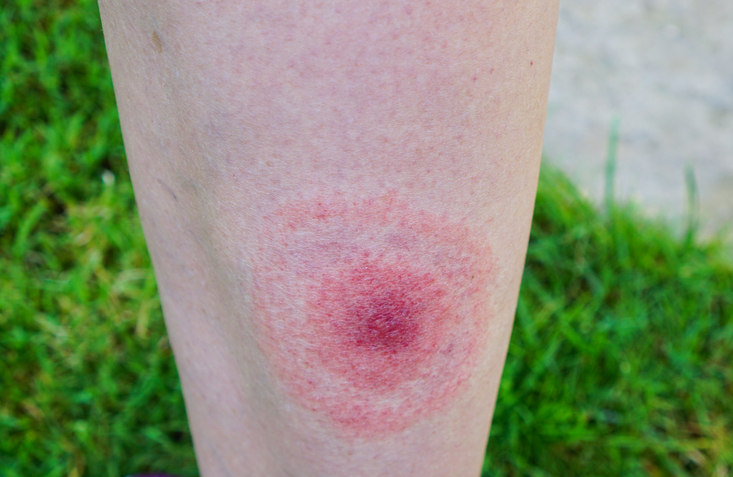If you feel like you’ve been hearing more and more about ticks and Lyme disease in the last few years, you aren’t imagining it. The population of blacklegged ticks – the species that can transmit the bacterium responsible for Lyme Disease to humans – has been steadily increasing. Climate change is resulting in rising temperatures, warmer winters and longer summers, causing increasing instances of diseases from blood-feeding pests like mosquitoes and ticks. Knowing how to prevent ticks from biting you, your family and your pets, as well as what to do if you find a tick, will help keep you and your loved ones healthy.
Once thought to only be a concern in highly grassy and forested areas, it is common to find ticks much closer to home, including residential lawns, gardens, community parks, and walking trails, where they arrive after hitching a ride with migratory birds and other animals. Each year, Public Health Ontario releases a map showing the estimated risk areas of Lyme disease across Ontario. Even though only the south/southwest borders of Wellington County and the the east side of Dufferin County are indicated as “high risk” on the map, it’s important to note that Lyme-carrying ticks are still found outside of these areas. The map estimates risk in a given area but you should be tick wise whenever you are outdoors.

Source: Ontario Blacklegged Tick Established Risk Areas 2024
Prevention and preparedness are key
The best way to protect yourself from ticks and Lyme is to prevent bites in the first place, but it’s also important to be prepared if you do encounter one on yourself or a loved one.
- Wear light-coloured clothing so ticks are easy to see.
- Cover up by wearing closed footwear and tucking pants into socks.
- Use a repellent that contains DEET or Icaridin and follow the manufacturer’s directions.
- Perform full-body checks on yourself, children, and pets.
- When you get home, put your clothes in the dryer on high heat for at least 10 minutes before washing them.
What should I do if I find a tick?
If you are bitten by a blacklegged tick, removing it within 24 hours reduces the risk of infection. If you’ve been bitten by a tick, remove it carefully using tweezers following the instructions from The Government of Canada, or with a tick remover/key.
- Use clean, fine-point tweezers to grasp the head as close to the skin as possible and slowly pull straight out.
- Try not to twist or squeeze the tick. Ticks firmly attach their mouthparts into the skin requiring slow but firm traction to remove them.
- If the mouthparts break off and remain in the skin, remove them with the tweezers. If you’re unable to remove them easily, leave them alone and let the skin heal.
- Wash the bite area with soap and water or an alcohol-based sanitizer.
- Submit a photo of the tick to WDGPH’s Online Tick Photo Submission Form or eTick.ca for identification.
Make sure to never:
- Flick or scratch an attached tick.
- Use petroleum jelly, heat, or nail polish to remove a tick (these take too long to work).
- Remove a tick while holding it around the middle (abdomen).
- Burn an attached tick.
These methods increase the chance of forcing harmful microorganisms out of the tick and into your bloodstream.
How do I identify a tick?
There are several types of ticks, but blacklegged ticks (also known as deer ticks) are the type that carry and transmit the bacterium responsible for causing Lyme disease (even though they are not born with the bacterium and only very rarely become infected with it). In addition, if you are bitten by an infected blacklegged tick, it must be attached and feeding for 24 hours for it to transmit the bacteria. After a tick has fed, it will appear large and engorged and may develop a shade of light green or yellow. See the image below for a guide of what a blacklegged tick can look like at various ages and stages.
Download the Tick ID Card for quick reference and information. If you’re still unsure, Submit a photo of the tick to WDGPH’s Online Tick Photo Submission Form. Please note: submitting tick photos helps identify blacklegged ticks to collect local data on where blacklegged ticks are being found and how often. Public Health does not test ticks for the presence of harmful microorganisms (like Lyme disease).

When should I see a healthcare professional?
The classic early symptom of Lyme disease is an expanding ‘bullseye’ rash, but it doesn’t appear in every case. Other early symptoms of Lyme disease include fever, headache, muscle and joint pain, and fatigue. These symptoms commonly appear between three days and one month after the removal of an infected blacklegged tick which has fed long enough to transmit. If you’ve been bitten by a tick and are feeling off or are concerned, contact your healthcare provider or local pharmacist.

Where can I find more information?
Find more information about Ticks and Lyme disease from the Ontario Ministry of Health or visit our Ticks and Lyme Disease page.
This blog has been updated from when it was originally published in 2022.
